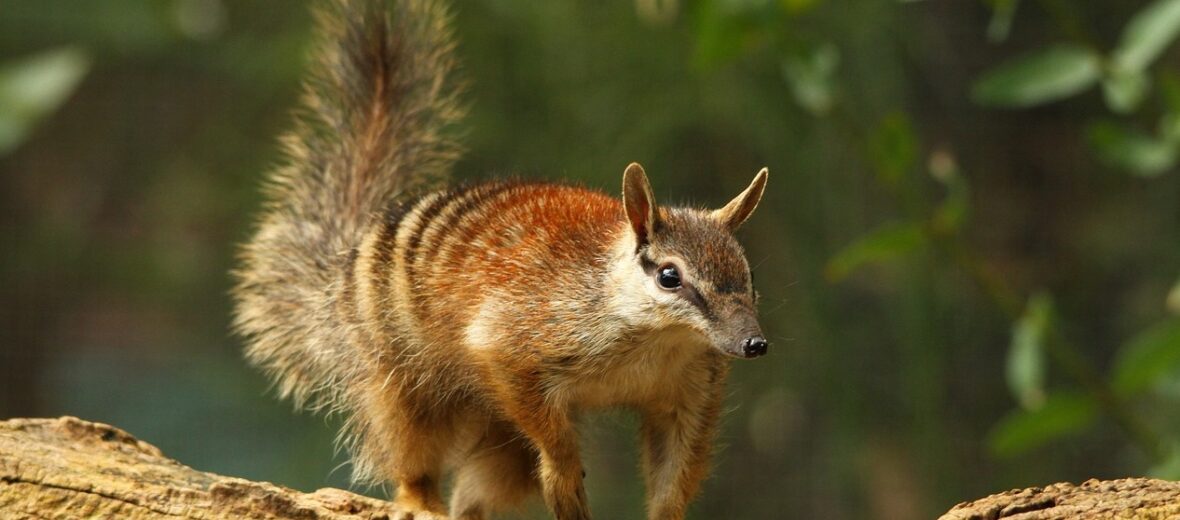
The numbat, aka banded anteater, is a unique Australian marsupial endemic to Western Australia and now back in Southern Australia. They use their long sticky tongues to catch insects like ants and termites, their favorite food! Once numerous, these creatures are now listed as Endangered by the IUCN. But conservation efforts are slowly helping to bring them back from the brink of extinction.
First the Stats…
Scientific name: Myrmecobius fasciatus
Weight: Up to 19 ounces
Length: 18 inches, plus their 8.2 inch tail
Lifespan: Up to 5 years
Now on to the Facts!
1.) Even though they are considered marsupials, numbats don’t have pouches. Instead, their babies clamp onto a teat on the mother’s belly and stay there for up to 5 months. She can have a litter of around 4 babies (2 males and 2 females).
2.) Even though they carry with them the name banded anteater, they are not related to the anteater at all, sans their taste for termites.
3.) They are diurnal (active during the day).
4.) The numbat will avoid mound destruction in favor of locating hidden entrances and sniping their prey.
5.) A numbat will use a hollow log or dig a burrow to hide and sleep in during the evening.
But wait, there’s more on the numbat!
6.) Foxes, dingos, snakes, birds of prey, and domestic & feral cats are the main predators of numbats.
7.) They are territorial and roam about in an area of roughly .57 square mile.
Did you know…?
Numbats eat up to 20,000 termites each day using their long sticky tongue. That equals to nearly 10% of their weight each day!
8.) These critters are solitary except during mating season.
9.) They are polygynous (1 male mates with several females).
10.) Numbats can run up to 20 mph, when chased!
Now a Short Numbat Video!
Also, check out the Critter Science YouTube channel. Videos added frequently!
Want to suggest a critter for me to write about? Let me know here.



